KPM, RIL MS Boissevain, Tegelberg & Ruys -
1942 to 1968
Please
Note: Firefox,
iPhones,
iPads & some other Search Engines
may not be suitable
Use
Internet Explorer & Old Google
for this Web Page to load perfectly!

Click
the logo above to reach the ssMaritime FrontPage for News Updates
& Features
With
Reuben Goossens
Maritime
Historian, Cruise‘n’Ship Reviewer, Author & Lecturer
Please
Note: All ssmaritime and my other related
ssmaritime sites are 100% non-commercial and privately owned sites. Be assured
that I am NOT associated with any cruise or shipping companies or travel/cruise
agencies or any other organisations! The author has been in the passenger
shipping industry since May 1960 and is now semi-retired, but continues to
write article on classic liners and cruise ships in order to better to inform
cruise and ship enthusiasts for their pleasure!
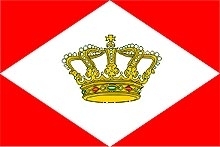
The
Three KPM Liners
Part Two
The Three
Ships from 1942 to 1968
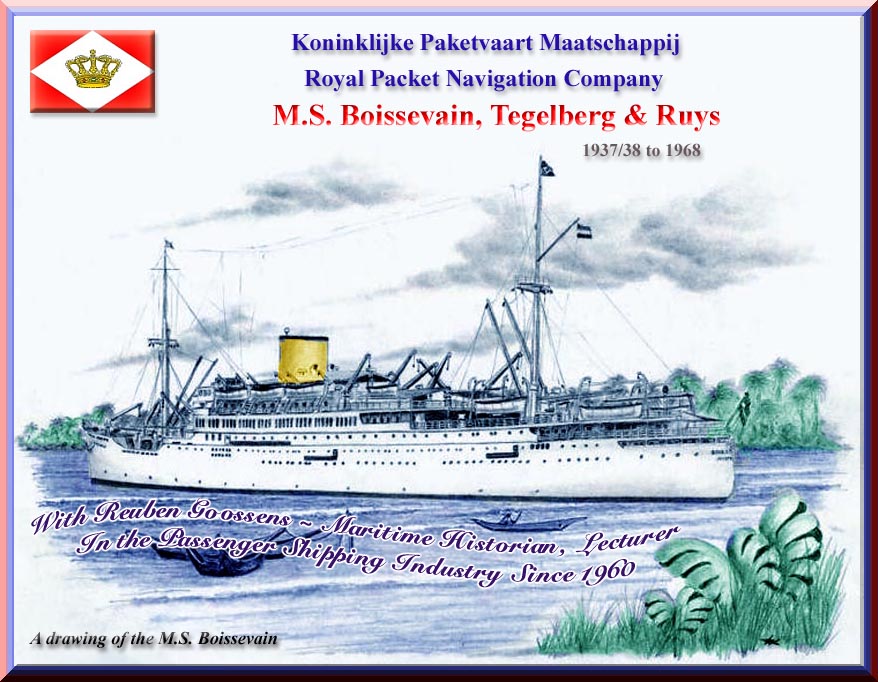
The
artist is unknown - See the photo/images notes at the bottom of the page
Please Note: Postcards, photographs & other images
are from the Author’s private collection, unless otherwise stated
Introduction:
The new
trio of liners, the largest Passenger-Cargo (combination) liners KPM had ever
built were just beginning to establish on their services when World War II
commenced, and they operate at that time a total of 140 ships ranging from
smaller vessels to this famed trio of combination liners, the MS Boissevain,
Tegelberg and Ruys, which operated on the following schedule from September
1938; Hong Kong, Manila, Saigon, Bangkok, Singapore, Batavia, Rodriguez,
Mauritius, Réunion, Tamatave, Lourenço Marques, Durban, East London, Port
Elizabeth, Mossel Bay, Cape Town. Also Zanzibar,
Mombasa, Mahé, Belawan Deli, Shanghai
back to Hong Kong.
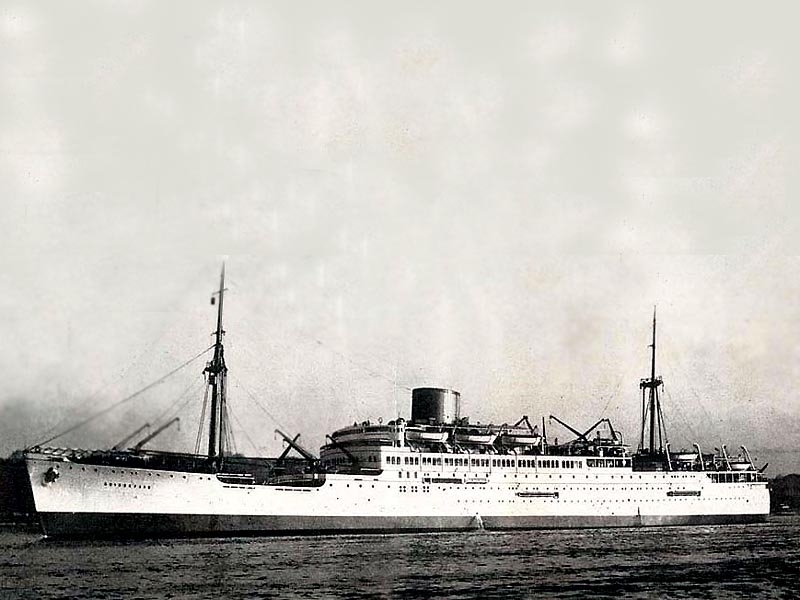
The
MS Boissevain seen prior to being conscripted into war service
The Trooping Years:
However,
by 1940 the MS Boissevain and her sisters entered their next phase operating a
variety of voyages.
With the
Boissevain having been chartered by the Netherland’s Government Ministry
of War, which was in exile in London, she sailed
to Sydney where
she was converted to become a troop transport ship, as. Having been completed,
she sailed independently via New Zealand,
the Pacific, and the Panama Canal to Glasgow,
Scotland, where she arrived
on June 9, 1942 where she received further armaments. Thereafter she sailed on
a multitude of convoys and even escaped a German U-Boat, managing to increase
her speed to a maximum of 20 knots. She sailed in convoy to and from Indonesia bringing more and more soldiers from
the UK, Australia, and New
Zealand, and they would usually disembark at Batavia and others would
then embark at Tandjong-Priok.
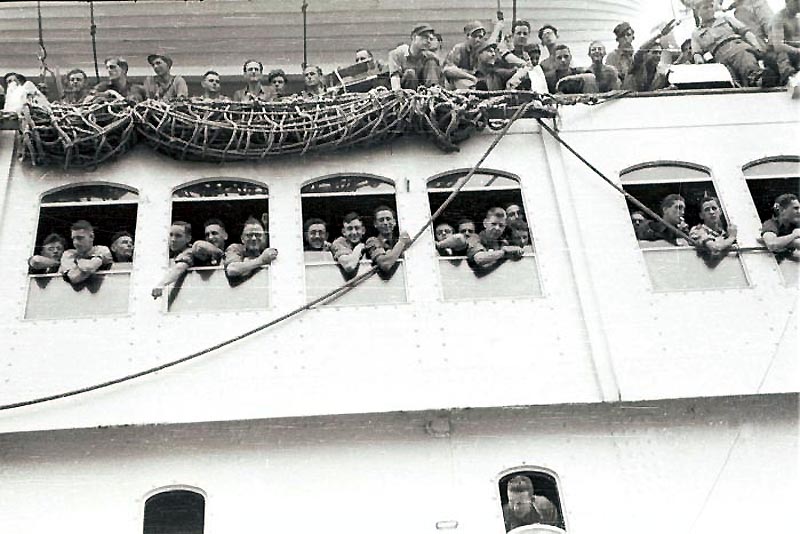
Soldiers
onboard the Troop Transport Ship HMS Boissevain as it prepared to depart
Tandjong Priok bound for Australia
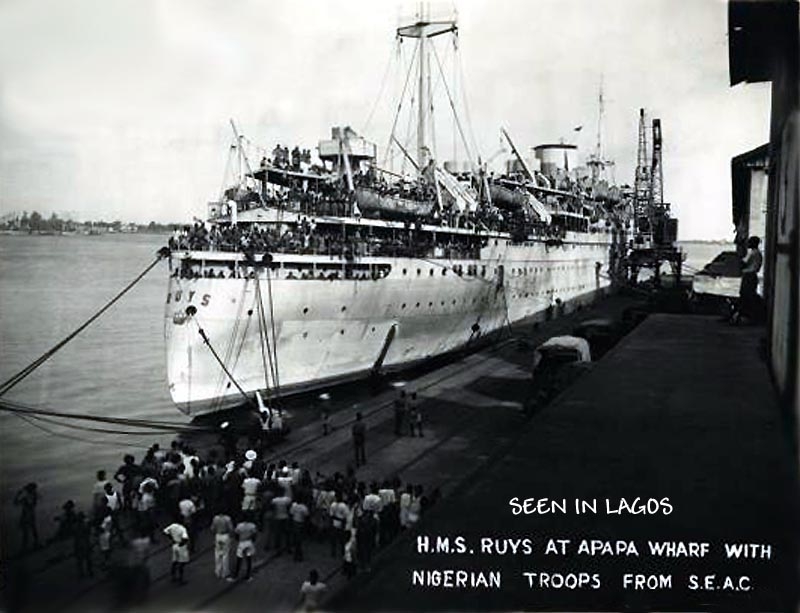
HMS Boissevain from 1942 to 1943:
I am well
aware that I cannot possibly add all the wartime trooping information in
relation on all three ships, thus below is a partial history of the
Boissevain’s hectic schedules, which in very many ways represents all the
ships involved. I trust that it will provide you with a good idea of their
movements!
Reuben Goossens.
MS
Boissevain having been place on the Indonesia to Australia service for some
time, departed Surabaya on February 5, bound for Oosthaven (Indonesia)
remaining there from February 7 to the 12th, and arriving at Batavia on
February 14, and she then continued to Fremantle arriving on February 24, and
headed for Sydney arriving there on March 6, 1942.
On the
above voyage she carried a good number of evacuees as well as a large quantity of *bullion.
*A Treasury letter forwarded from England, dated
February 23, 1942, addressed to the Governor of the Commonwealth Bank, Sydney (ref
7543/42/248) it stated: “Most Secret. ‘Dutch vessel
‘Boissevain’ left Batavia
February 18, due Fremantle 24 February with evacuees and large quantity of
bullion. No details available. Navy Fremantle will inform Western Australian
Government expected time of arrival.’” This confirms that the Navy,
being solely in charge of the ports, was involved in the movement of gold
shipments. And through the British Consul General in Batavia,
the British government in London
was briefed about the gold movements before the Australian Government. In
comparison to the £20,000,000 pounds sterling worth of bullion the Dutch moved
to Australia.
The Boissevain was in Sydney,
where the she would undergo a partial refit and made fit to become a troop
transport ship, which took place between March and April 1942. With the refit
completed, the Boissevain departed Sydney on
April 25, 1942 for a voyage to the U.K., being a completely
independent voyage, as she was not yet commissioned as a troop transport ship.
She crossed the Tasman Sea bound for Lyttelton, being the Port for Christchurch, New Zealand, arriving there on April 28, and she
departed on May 10. She then headed across the Pacific bound for Balboa (Panama) arriving on May 27, then to New Orleans where she
remained from June 3 to the 23rd.
On this voyage across the Atlantic from
Cristobal it is reported that on July 1st whilst zigzagging the foremast
lookout reported a submarine ahead, which was also confirmed by the Chief
Officer on visiting the foremast. It was soon noted the submarine had changed
course to intercept the Boissevain. Under the command of Captain Jansen, the
ship turned 180 degrees and the Chief Engineer was ordered to push the engines
to the limit. The needle recording the speed showed the maximum of 20 knots,
which was maintained for four hours until nightfall. Each cylinder lubricator
was manned by a greaser to maintain a steady supply of lube-oil for the
cylinders.
After nightfall the Boissevain resumed her original course and she
finally arrived on the River Clyde (Glasgow) on July 9, 1942.
It was in Glasgow
where a comprehensive inspection was made of her engines, which revealed
several of her twenty-four pistons had suffered cracks, and it was repaired or
replaced.
On August 28, 1942 with convoy WS.22 and the HMS Boissevain departed
Clyde bound for Freetown arriving there
September 9 and she departed on the 13th, next was Durban arriving on September 29.
Convoy
WS.22; besides
the HMS Boissevain, there were a total of four Dutch
liners, being the Ruys, the Johan van Oldenbarnevelt, the Nieuw Holland, as
well as the Boissevain. The California was
the Commodore-ship and the convoy was escorted by the cruiser H.M.S. Aurora,
the auxiliary cruiser H.M.S. Alcantara, and there were twelve
destroyers that escorted convoy WS.22.
HMS Boissevain departed Durban
on October 3, but now she was with convoy WS.22B that sailed to Bombay arriving on
October 17. She departed Bombay on October 26,
bound for Cape Town, arriving there on November
10, and departing again on November 16, for a voyage to Surabaya, but this time without an escort and
she arrived on December 2.
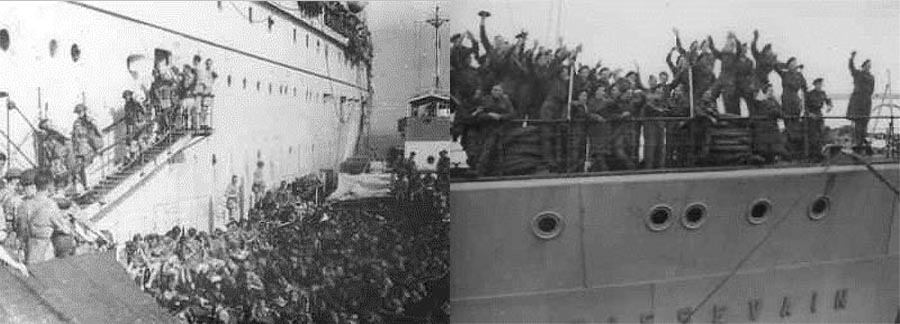
HMS is seen packed with troops
arriving in the Dutch East Indies (Indonesia)
The Boissevain then sailed once gain for the
Clyde arriving in December and then sailing in convoy KMF.6 on December 26, to
Algiers arriving there on January 3, 1943.
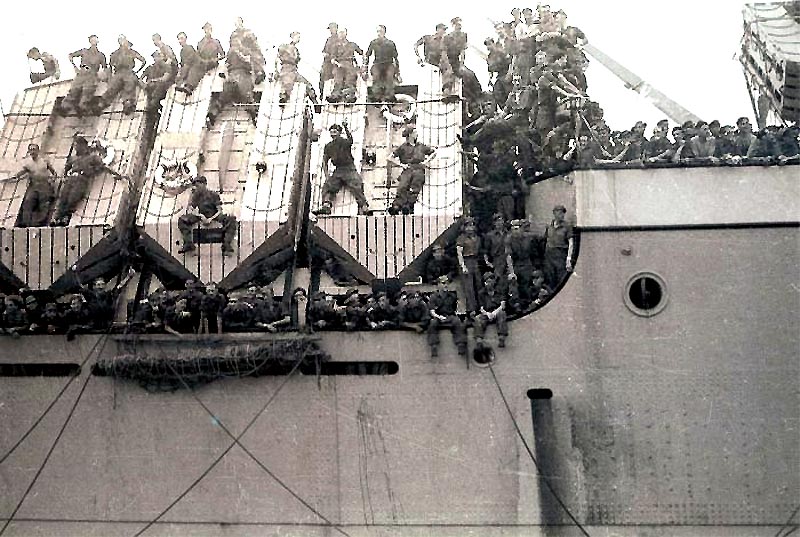
More troops seen aboard the HMS
Boissevain
In 1942, MS
Tegelberg was also chartered by the Netherland’s Government Ministry of
War, and she headed for Harland & Wolff shipyards in Liverpool,
where she was converted into a troop transport ship. During their conversions,
all three ships had additional drinking water and sanitary facilities installed
for the large number of troops on the vast majority of sailings. The HMS Ruys
and Tegelberg were greatly involved in the Allied landings in North Africa as
well as on Sicily.
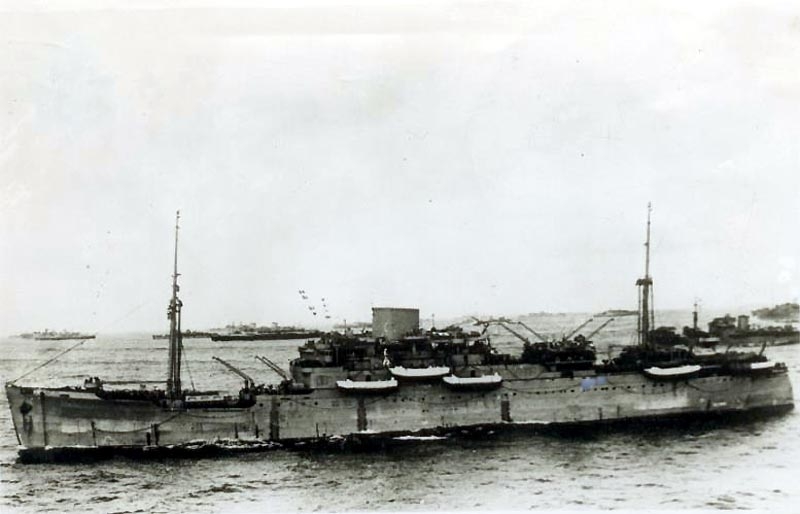
Here
we see the Troop Transport Ship HMS Tegelberg during her wartime duties
On
November 6, 1943, the ocean liner MS Marnix van Sint Aldegonde being six miles
off Cape Bougaroin Light, Algeria, and with 3,000
troops and crew onboard during convoy KMF 25A sailing from Liverpool to North
Africa, was torpedoed by German aircraft. Although she remained afloat, she was
taken in tow, but she was rammed by the also damaged Destroyer Beatty (DD-640) and she and the destroyed sank before reaching port.
The HMS Ruys distinguished herself during the
sinking of the Marnix van Sint Aldegonde, although the Ruys was packed with
troops and crew, there was no space to take any survivors, and with other ships
being nearby, the Captain decided to leave all the ships lifeboats behind for
the survivors, and the other ships nearby were able to take them. Thankfully
there were no losses for all 3,000 were landed at Philippe Ville. However the ‘Marnix’
was a tragic loss!
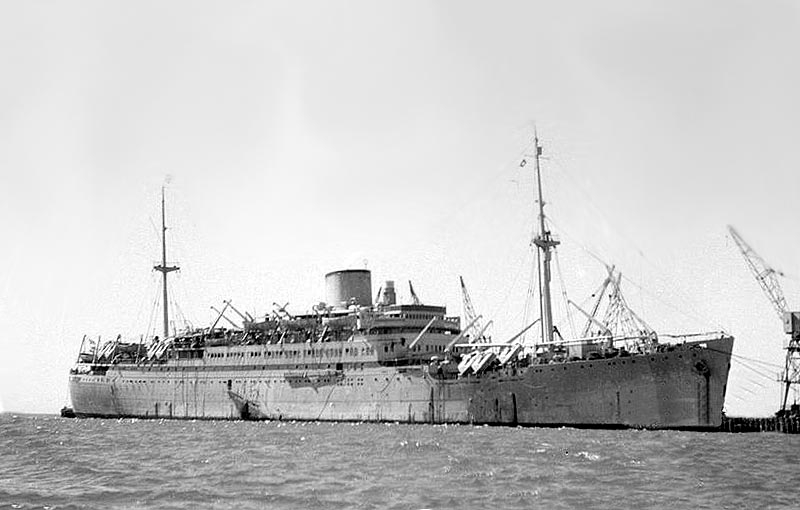
The
HMS Ruys still had the look of a passenger ship, but she was very much a
troopship
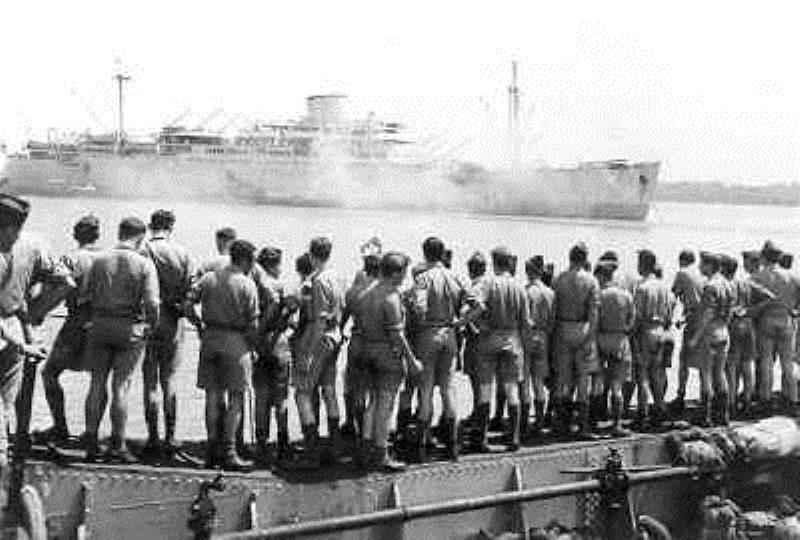
Here is one more
view of the HMS Boissevain during her latter wartime operations
Ships Returned to Owners:
Although all
three ships were kept very busy on a variety of sailings, but finally in 1947
they were officially decommissioned and returned to her owners. But sadly for
KPM, during the war the company lost 98 ships, or a massive 171,064 tonnes,
which was a huge loss for them, and it would take a long time to rebuild their
freight operations.
With the
HMS Boissevain, Tegelberg, and Ruys having served as troop transport ships
during WW2, they all headed for the Taikoo Dockyards in Hong
Kong where they would be comprehensively refurbished, and restored
to their original beauty, complete with their luxurious accommodations and
facilities.
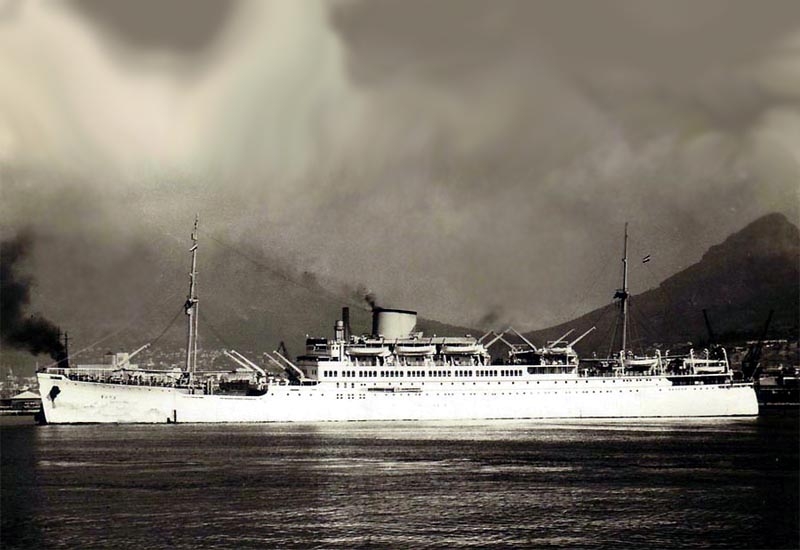
The
MS Ruys seen after her 1947 refit with a buff (yellow funnel) and at one of her
new destinations, never before visited!
Upon completion late in 1947 they
were all reregistered in Amsterdam, the Netherlands, as
well as being transferred to the newly formed “Koninklijke Java-China
Paketvaart Lijnen” or “Royal Interocean Lines.” However more
so, their schedules received a massive makeover, as all three ships would now
be sailing from Asia to Indian Ocean ports, to west, south and east African
ports, and then crossing the southern Atlantic across to the east coast of
South America concluding at Buenos Aires, and then return almost via the same
oceans to Yokohama and Hong Kong, with a number of different ports.
Ports of Call Outward: Yokohama, Hong
Kong, Singapore,
crossing the Indian Ocean to Mauritius,
Durban, and Cape Town,
then onward across the South Atlantic to Rio de Janeiro,
Santos, Montevideo
to Buenos Aires.
As we can see from the above, these fine
liners navigated these oceans much like the ancient navigators, and therefore,
these wonderful and much loved combination liners gave world travellers some of
the most historically interesting countries and Islands in the Indian Ocean as
well as west and South Africa and ports along the east coast of South America,
this was indeed a “Voyage to remember!”
Engine Changes:
In 1954 the ships were converted to heavy oil
and improve operation costs; in order to achieve the changes there were
technical problems involved, and in already spacious engine room an additional
platform was installed to place the necessary equipment required to clean heavy
oil. The Boissevain was by then registered as being; 14,271 GRT, the Tegelberg
14,281 GRT, and the Ruys 14,285 GRT.
March 1956 to June 1957
Schedule: Yokohama, Nagoya (optional), Osaka
(optional), Kobe, Hong Kong,
Singapore, Port Swettenham
and/or Penang, Mauritius,
Lourenço Marques, Durban, Port
Elizabeth, Cape Town, Rio de Janeiro, Santos, Buenos Aires. Returning; Buenos Aires, Montevideo, Santos, Rio de Janeiro, Cape
Town, Port Elizabeth, East London, Durban, Mauritius, Belawan for (one call
each ship, thereafter optional), Singapore, Manila (Boissevain called once,
otherwise optional), Hong Kong, Kobe, Osaka (optional), Nagoya (optional),
Yokohama.
Note: Optional
ports were based on number of passengers booked to board in those ports,
otherwise if in numbers were very small in Japan,
they would travel to Yokohama,
or the nearest port the ship would be berthed.
Refitting
the RIL Trio:
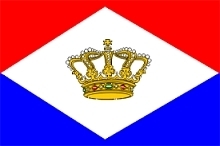
The
official Royal Interocean Lines (RIL) flag & logo
In 1961
and 1962 all three ships saw a dramatic change as they received an extensive
refit, modernising the public rooms as well as all accommodations. In addition,
air-conditioning equipment was installed, which would now be extended to all
public rooms as well as to all First Class accommodations. Accommodations were now listed as being: 131 First Class, 84 Second Class & 179 in Third Class.
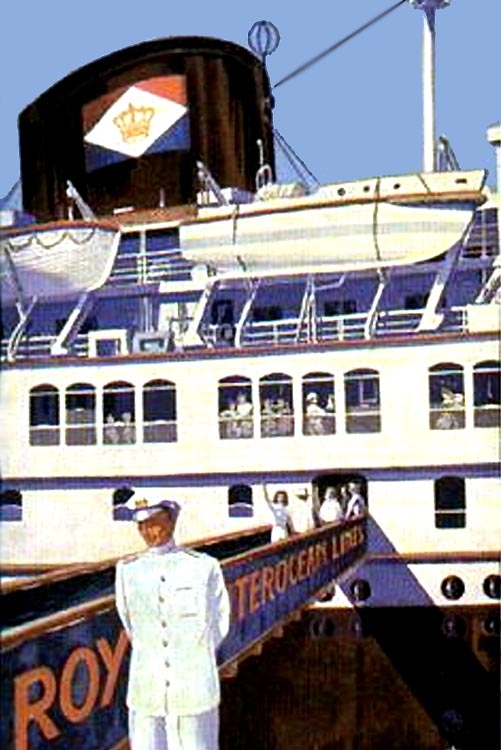
A
promotional image of the new looking trio in their new look
Their
exteriors were also dramatically altered, as they would now feature the
traditions RIL livery, which was, a black hull with red boot topping, and a
white superstructure, Her funnel was painted black with the RIL logo of a red,
white and blue Dutch flag, but having a white diamond in the center with a gold
Crown, as it was Royal Interocean Lines!
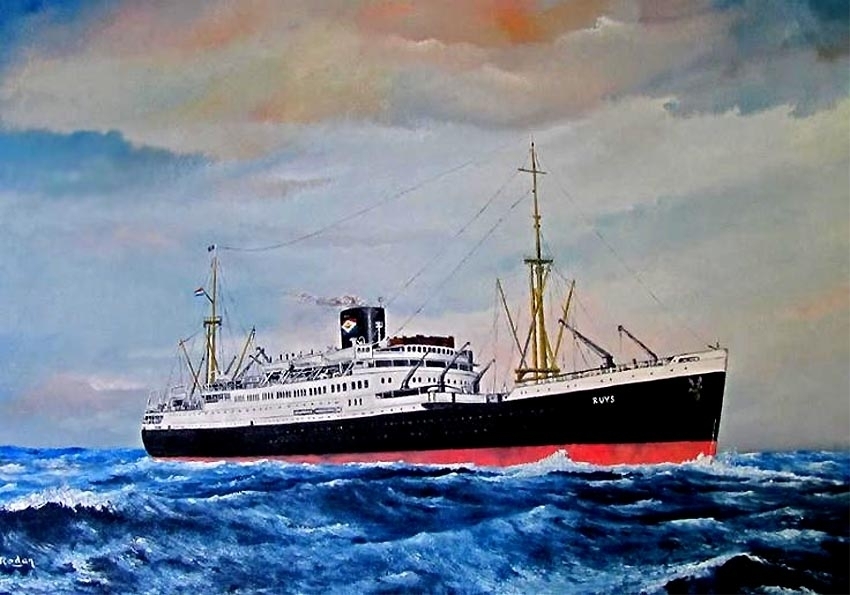
Here
is a painting of the MS Ruys in her new Royal Interocean Lines livery
The Painting is by & © Rodar
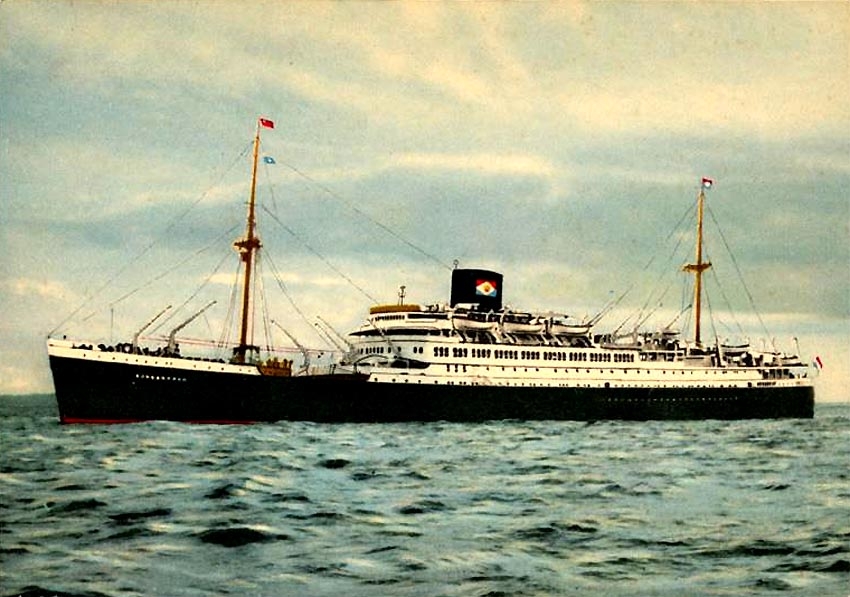
A
colourised photograph of the Boissevain, seen in her new RIL livery and funnel
An original black & white
RIL Promotional photo
Once again
there was a tonnage change, being; MS Boissevain 14,285 GRT, Tegelberg 14,300
GRT, and the Ruys 14,303 GRT. With the ships looking simply magnificent, they
returned to their previous services and their passengers loved their new
interiors.
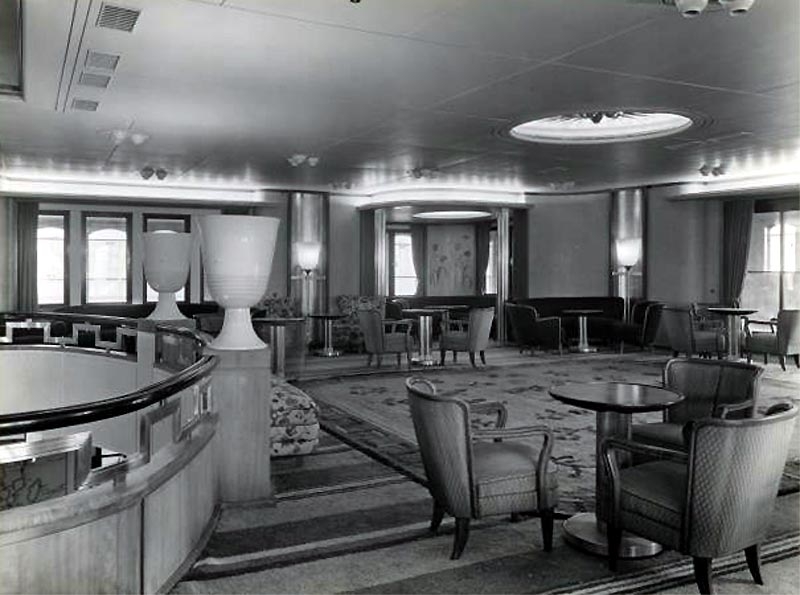
The
new look as seen in the Social Hall on the MS Boissevain
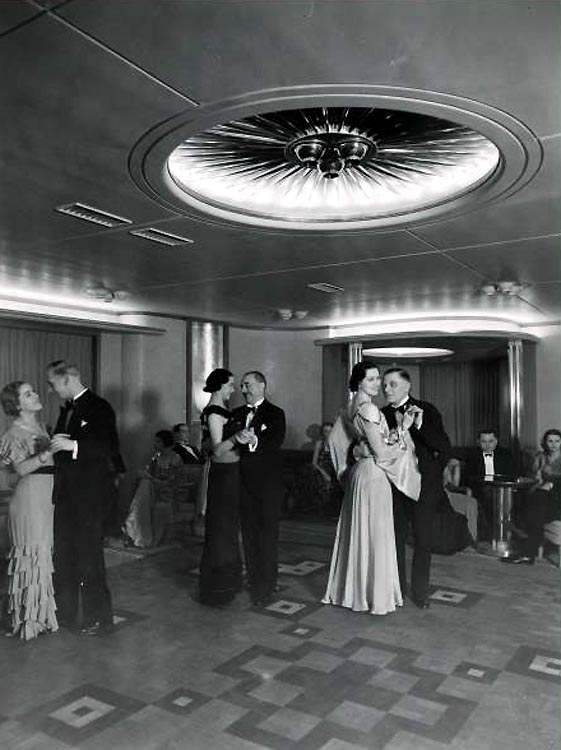
Guests
dancing in the Social Hall
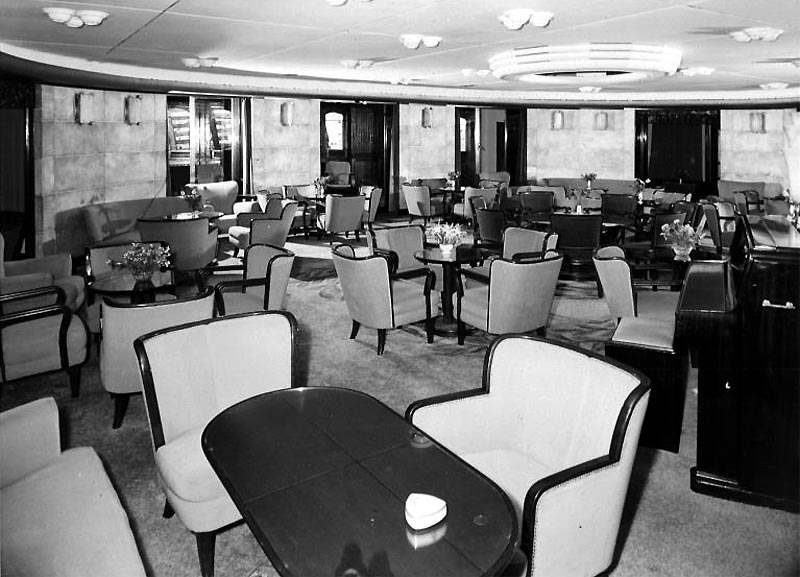
The
modernised Social Hall onboard the MS Tegelberg
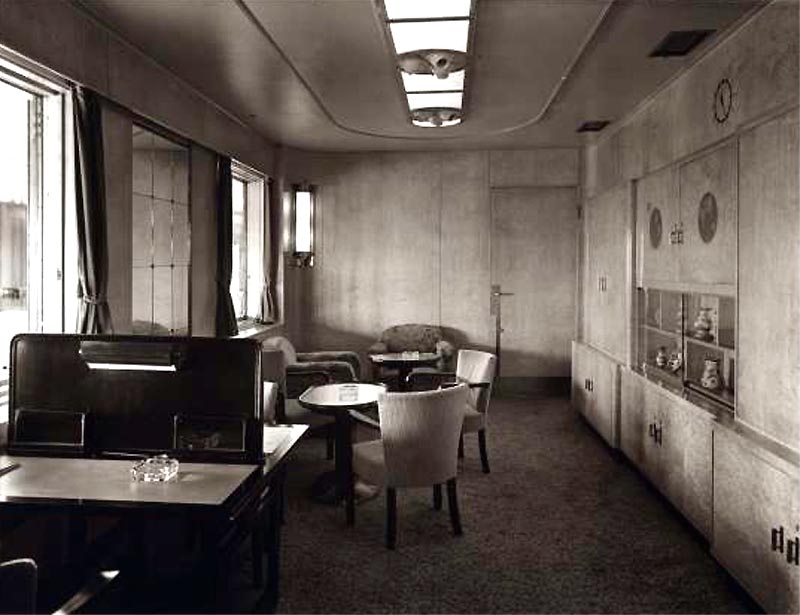
The
Writing, and Reading Room and this venue also has a Library
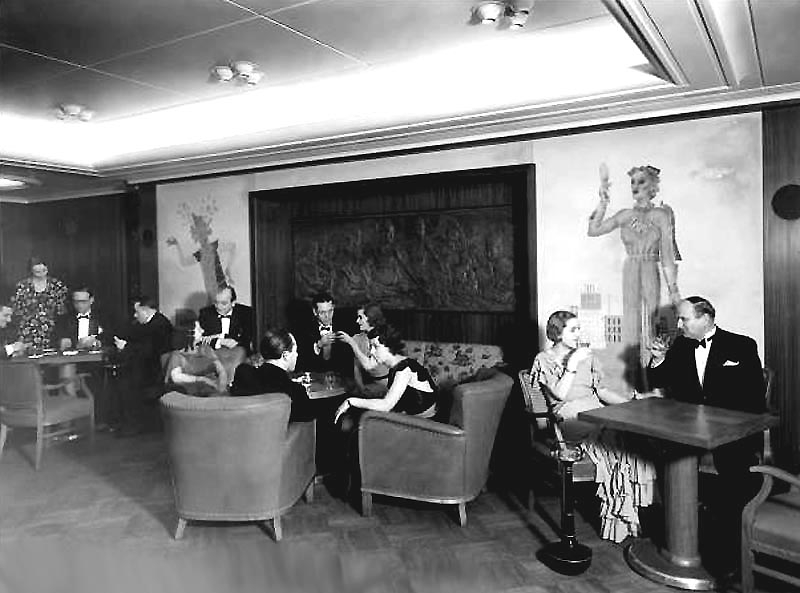
Above & below: Smoking Room and Bar onboard the MS
Boissevain
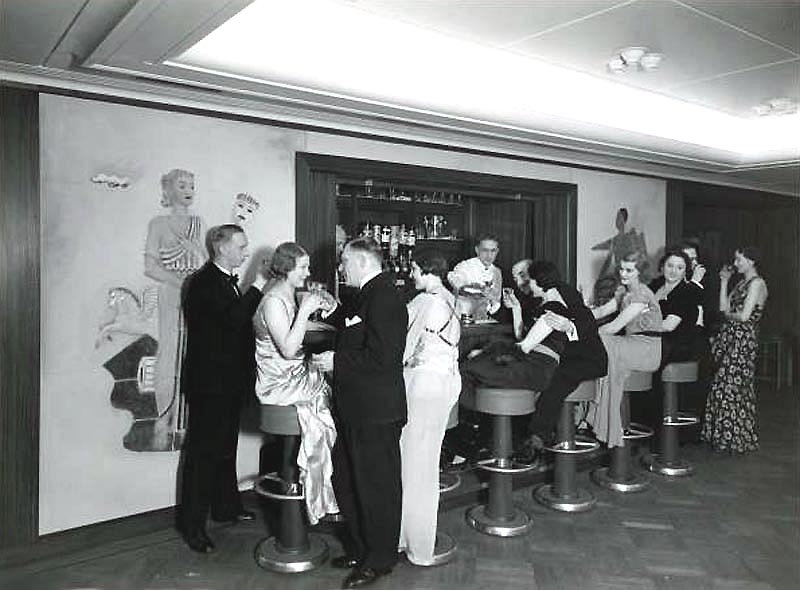
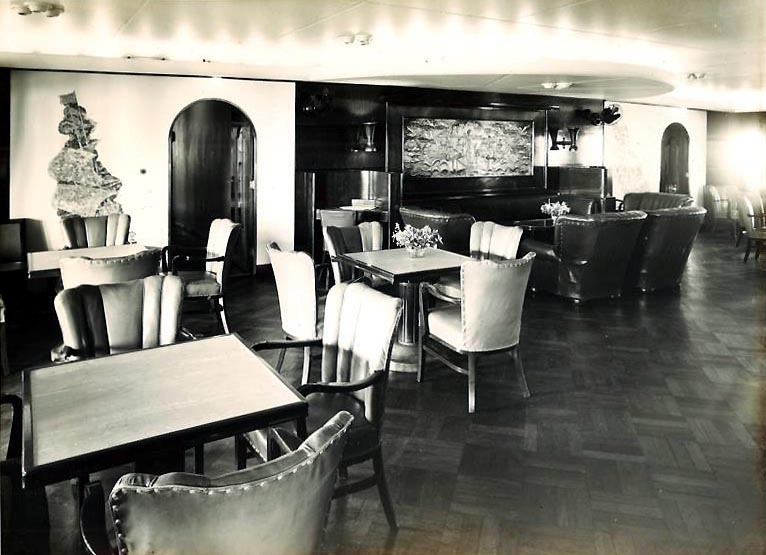
The
Smoking Room received a brand new look and all three ships, this is the MS Ruys
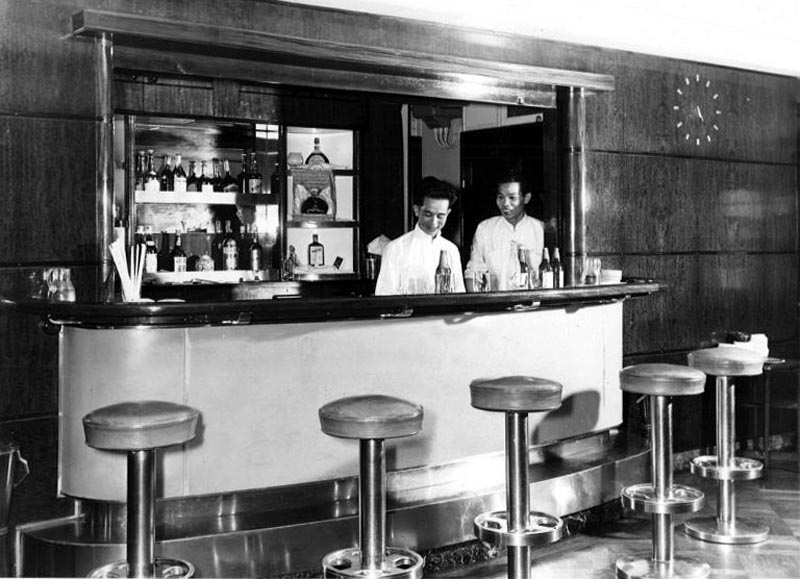
The
Smoking Room New Bar on the MS Ruys
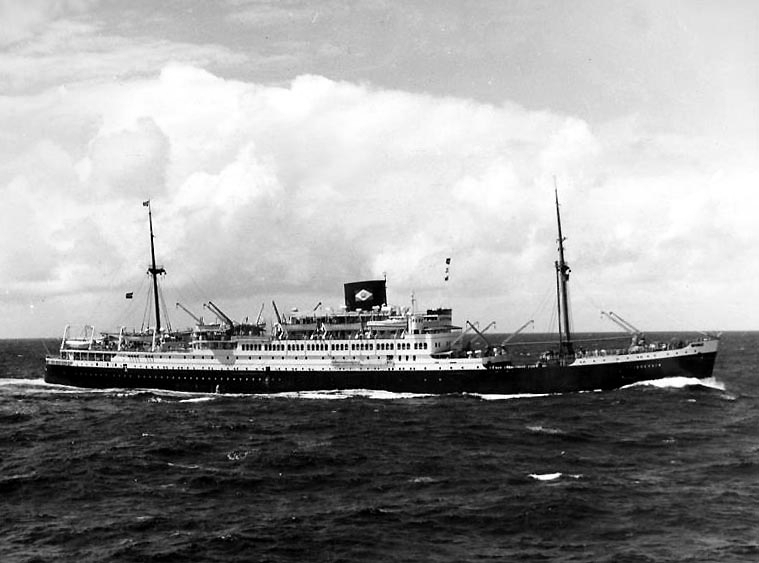
MS
Tegelberg in her RIL livery
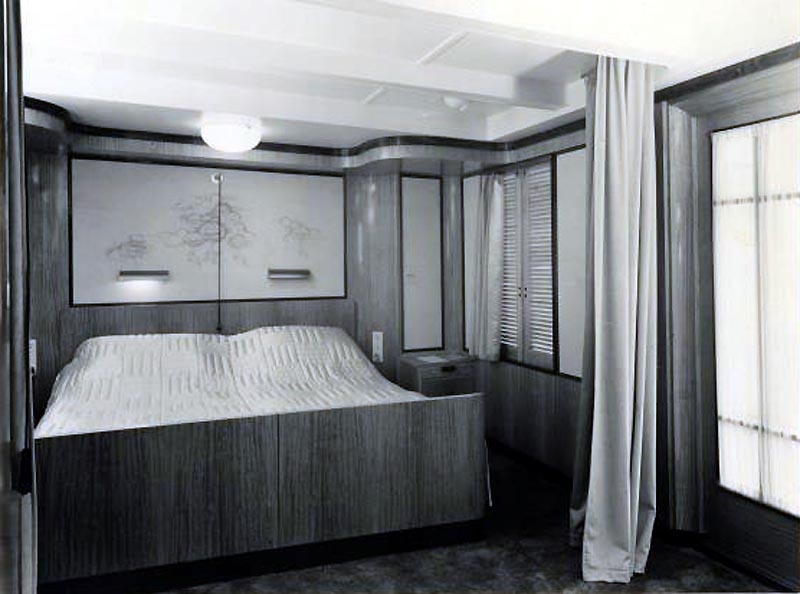
Above & below; portside Deluxe Suites seen after their
refit
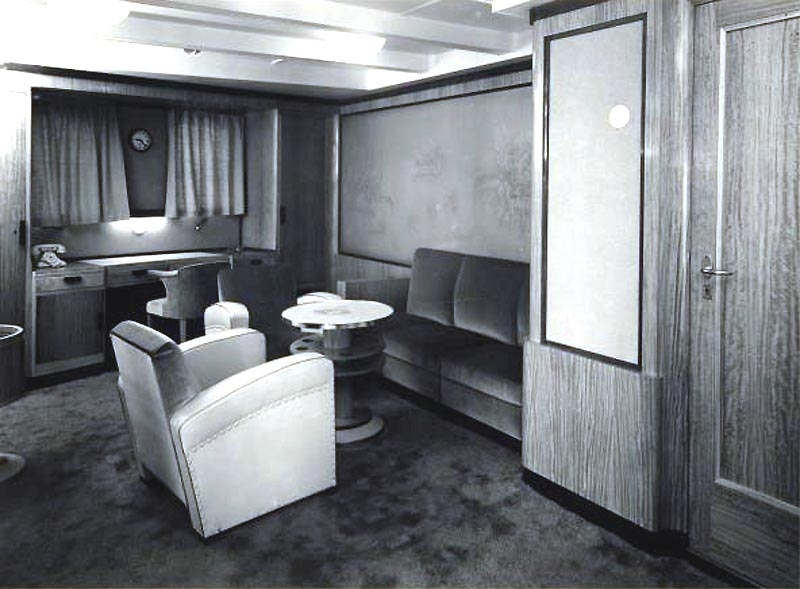
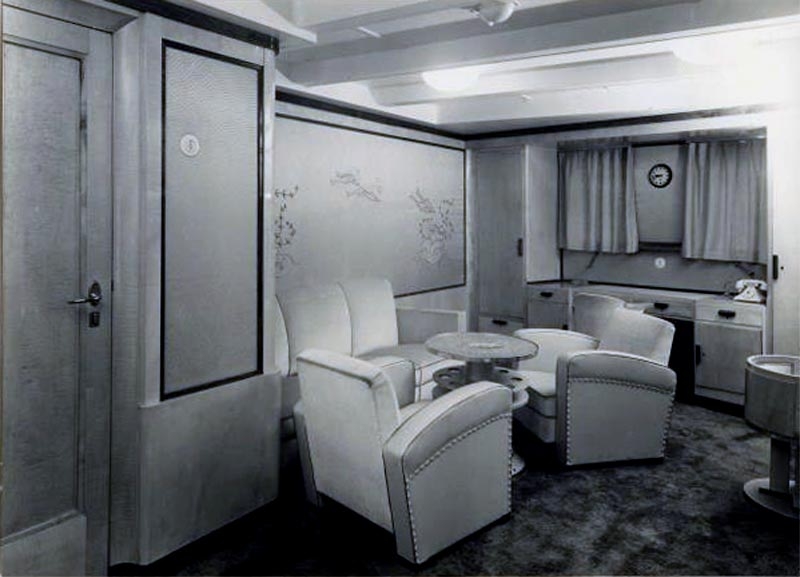
Deluxe Suite on
the MS Ruys
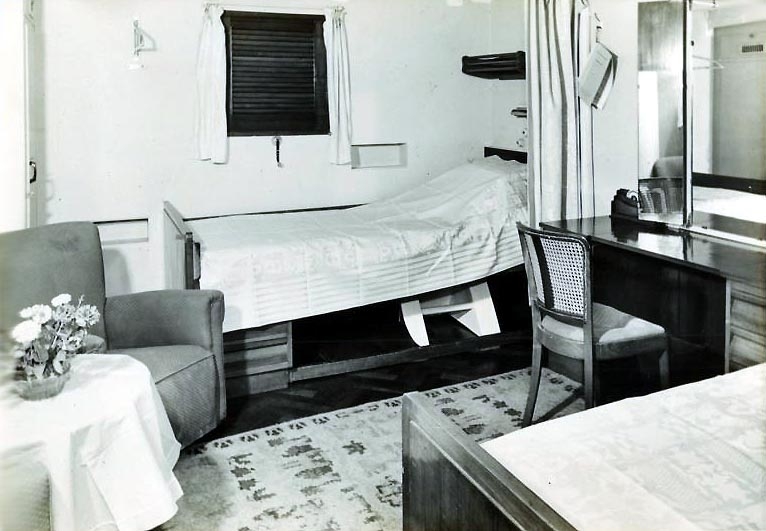
An
A Grade twin bedded cabin with facilities
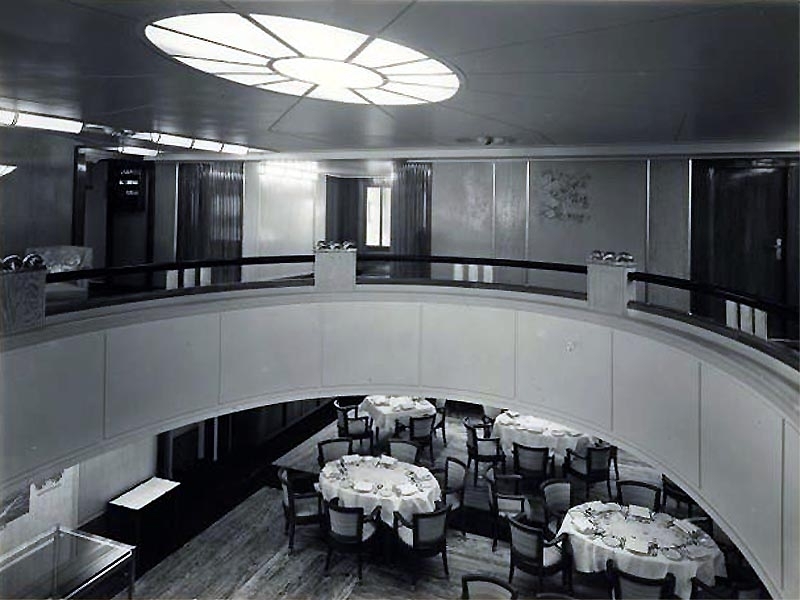
The
A Deck Lobby looking forward with the well over the Dinning Room on the MS Ruys
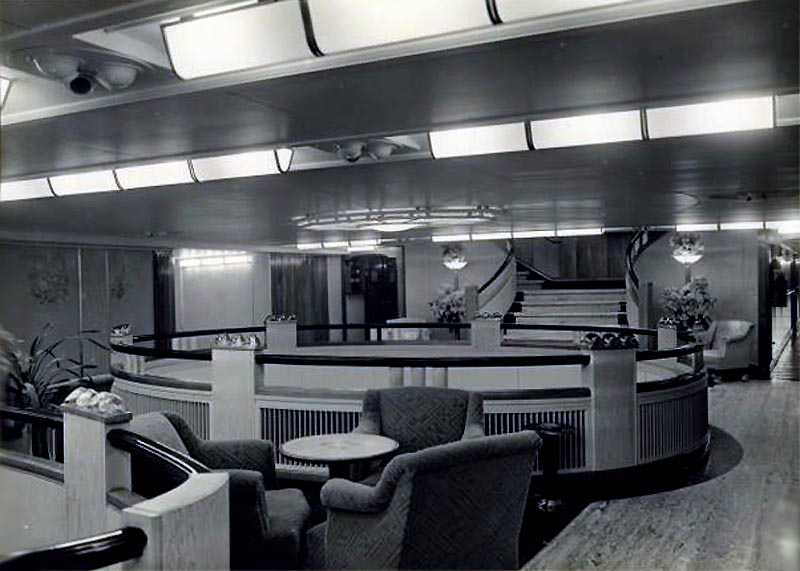
Here we see the Entrance Hall & Lobby, with
the grand Stairwell from The Social Hall seen aft
The well over the Dinning Room, a lounge area,
and the stairs leading down to the Dinning Room
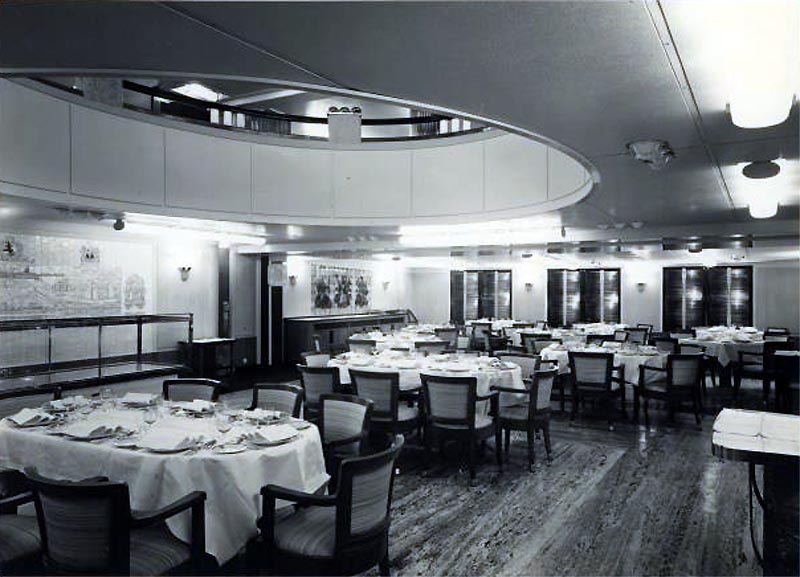
The
Dinning Room on MS Ruys, looking aft to starboard, the grand stairwell is on
the right
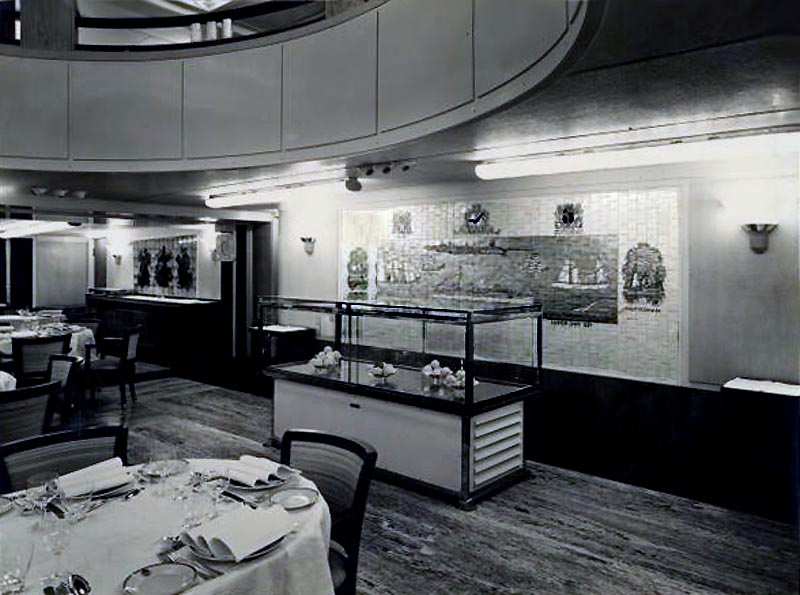
Another view of
the Ruys’ Dinning Room looking to aft to port
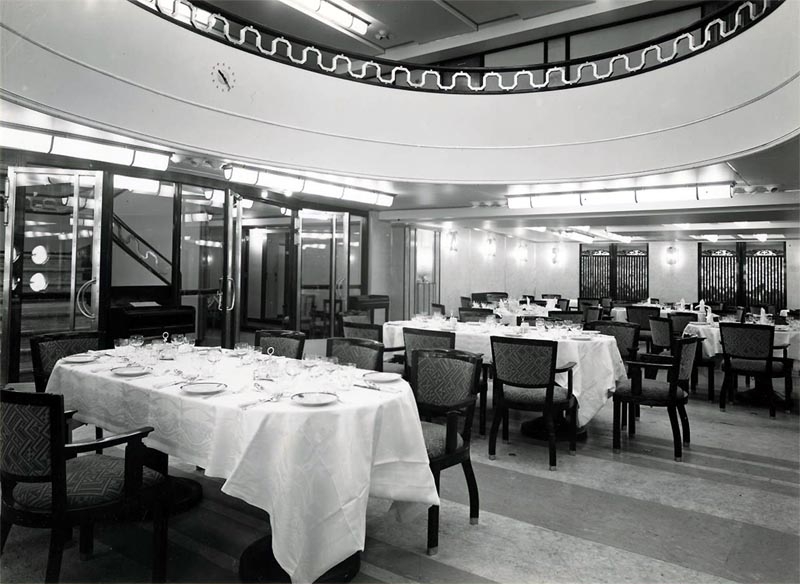
And here is a
first view towards the sweeping glass wall and door, with the stairwell behind,
to the Dinning Room
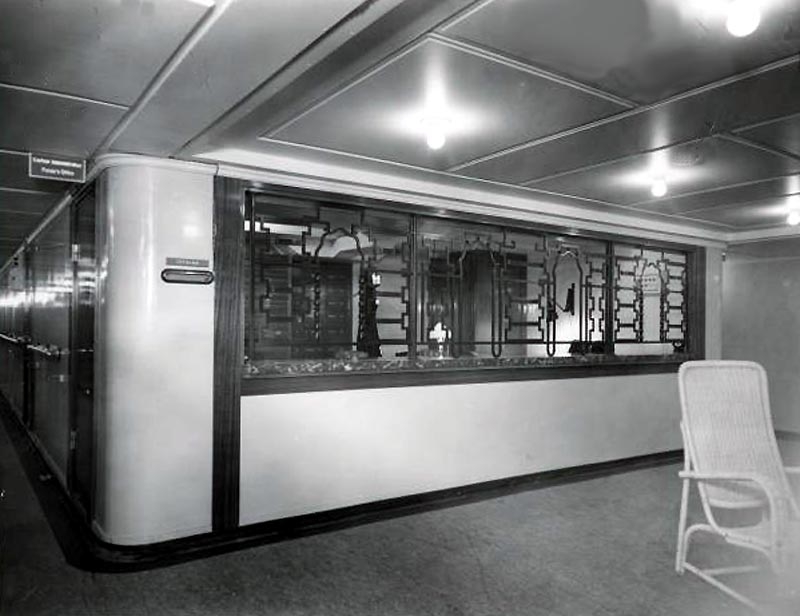
Modernised seating was introduced, but the
Pursers office remained traditional
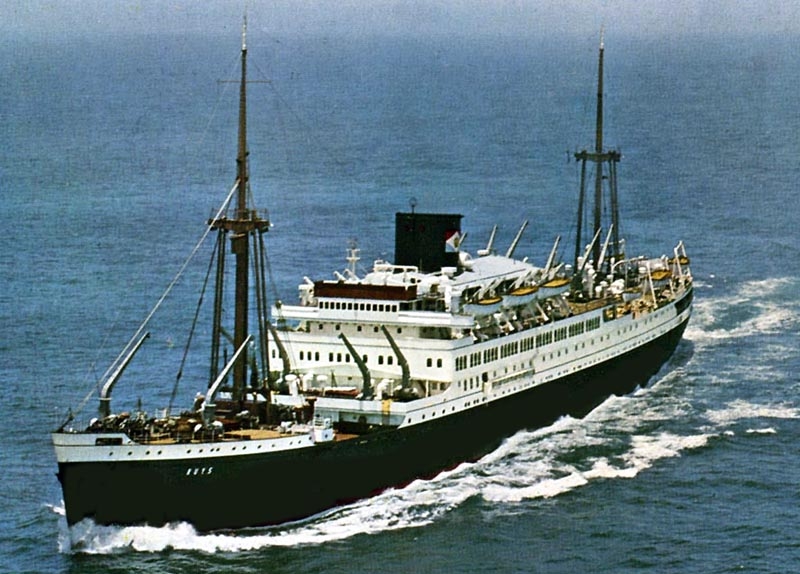
MS
Ruys seen after her refit
All
three ships continued on their Asian, Indian Ocean Islands,
African, and South American schedules and remained successful, but
sadly as the sixties continued passenger loadings were declining, due to the
popularity of air travel.
However in
April 1967, Royal
Interocean Lines announced plans to retire the Boissevain, Tegelberg, and the
Ruys during the year of 1968, as passenger loadings were down, as well as new
cargo handling taking place on newly equipped ships. These new situations made
this trio of ships uneconomical to operate, and thus RIL decided to mostly
concentrate on their smaller and extremely popular MS Tjiluwah and Tjiwangi
which continued to operate on the Asia to Australia service!
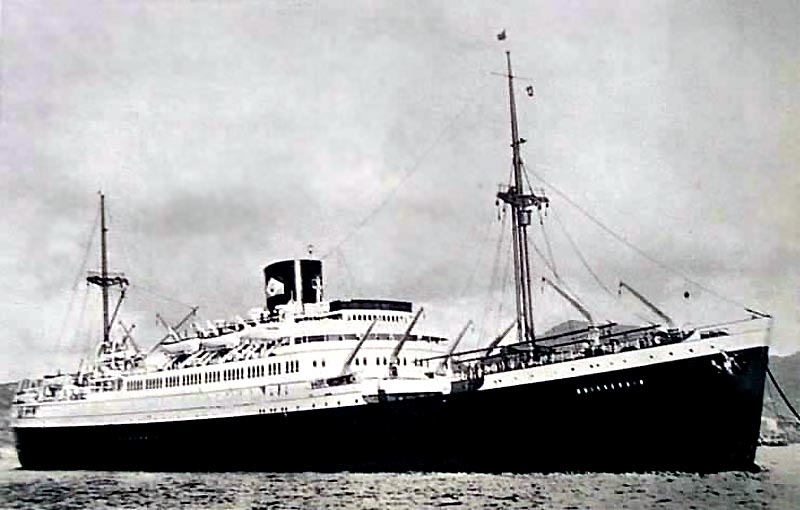
MS Boissevain heading toward her
final days
But then during her second last ever commercial
voyage, on January 29, 1968, the Boissevain was sailing from Kobe to Nagoya (on her way back to
Yokohama), and being some 22 miles west of Cape Daio, there was a collision
with the 1955 built, 325-ton Japanese vessel MS Hokko Maru No 1, being en-route from Hokkaido bound for Anan with her holds filed
with a cargo of wood pulp. Although the Boissevain was not badly damaged, and
was able to continue her voyage, the Hokko Maru (I) sank SSW of Cape Daio, and her
crew were rescued.
The Final Two Voyages of the MS Boissevain:
A
still magnificent looking MS Boissevain departed for her very last commercial
voyage from Yokohama
in February 1968, and returning in June.
Her schedule was as follows: Yokohama, Nagoya,
Kobe, Pusan, Naha, Hong Kong, Singapore, Port Swettenham, Penang,
Mauritius, Lourenço Marques,
Durban, East London, Port
Elizabeth, Cape Town, Rio de Janeiro, Santos, Montevideo, Buenos Aires. Return voyage:
Buenos Aires, Santos,
Rio de Janeiro, Cape Town,
Port Elizabeth, East London, Durban,
Mauritius, Singapore, Hong Kong, and back to Kobe, Yokohama.
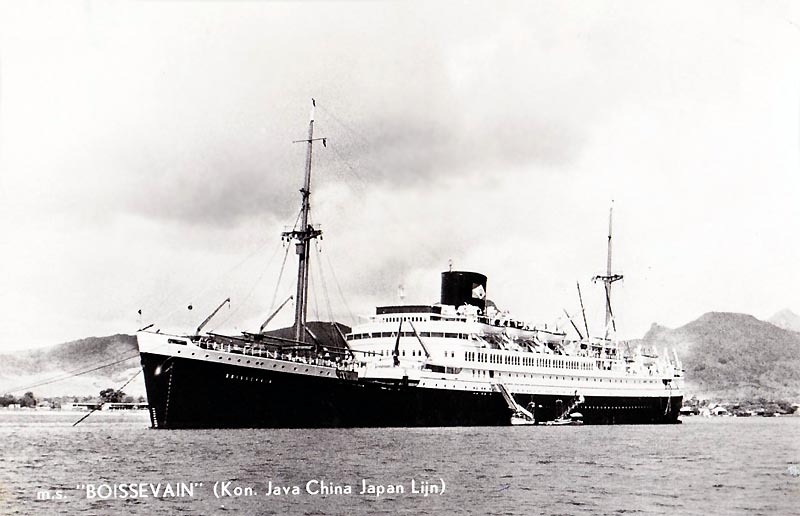
This is a Royal Interocean Lines postcard that was given out to all
passengers during the MS Boissevain’s final voyage
The
Boissevain was sold in the second quarter of 1968 for £204.000 to the Taiwanese
ship breaker “Shin Fa Steel Manufacturing Co.
Ltd” of Taiwan.
She departed Hong Kong on June 21, 1968 with a small delivery crew and headed
for Kaohsiung
where she arrived on July 14, 1968 where this 31-year-old liner was the second
of the trio to be broken up.
The
last voyage of the MS Tegelberg:
Having
returned from her final voyage in March 1968, she headed for Hong
Kong where she was de-stored and all her crew had disembarked the
ship, as soon a new small crew would board her.
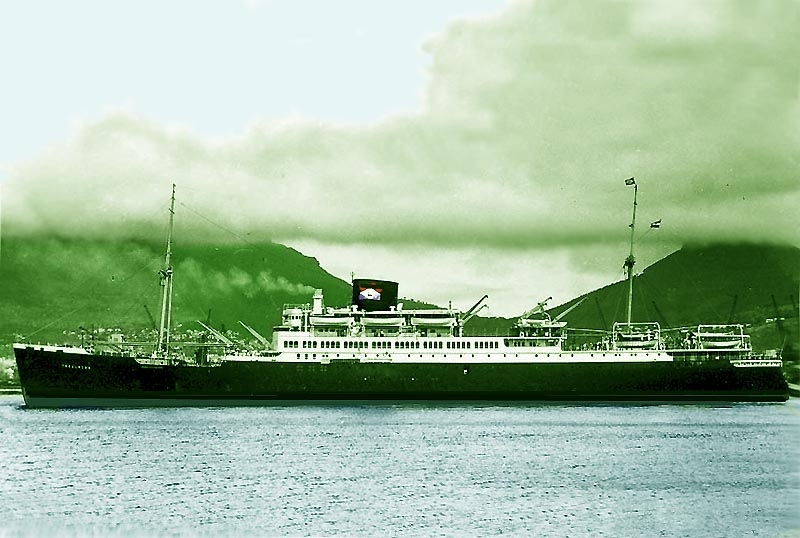
The MS Tegelberg is
seen arriving in Cape Town
during her final voyage there
Although
being the second of the trio to have been built, the MS Tegelberg was the first
of the three ships sisters to be sold to the breakers. In the first quarter of
1968 the “Victoria Stem Company” of Taiwan purchased her, for her to be
demolished. The Tegelberg departed with a skeleton crew on March 14, 1968 and
headed for Kaohsiung,
Taiwan, and there, she was
broken up between June 20, and September 11, 1968 and thus the second of this wonderful
30-year-old trio had gone!
The
Final Two Voyages of the MS Ruys:
MS
Ruys’ made her final commercial voyage departing from Yokohama in April 1968, and she returned in
August. Her voyage was as follows:
Yokohama,
Nagoya, Kobe, Pusan (optional), Naha (optional), Hong Kong, Singapore, Port
Swettenham, Penang, Mauritius, Lourenço Marques, Durban, East London, Port
Elizabeth, Cape Town, Rio de Janeiro, Santos, Montevideo, Buenos Aires. Return
voyage: Buenos Aires, Santos,
Rio de Janeiro, Cape Town,
Port Elizabeth, East London (optional), Durban, Mauritius,
Singapore, Manila
(optional), Hong Kong, Kobe
and back to Yokohama.
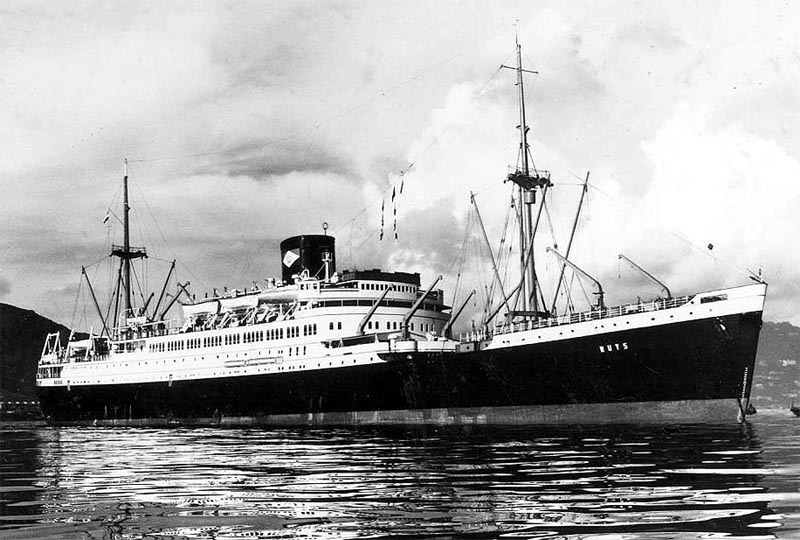
The delightful B&W photograph
of the MS Ruys in her RIL livery during her final days
In August 1968 MS Ruys was sold to
“Messrs Tung Ho” of Taiwan as the ship was unloaded of all her last
ever cargo and they removed any of the valuable Company objects from the ship,
she departed with a skeleton crew board bound for Kaohsiung breakers yard where
she arrived on September 13, and here this fine 30-year-old liner was duly
broken up.
Please Note:
Specifications for these three fine Combination Liners can be found on Part
One, whilst A Deck Plan and some Brochures are on Part Three. See the INDEX
below!
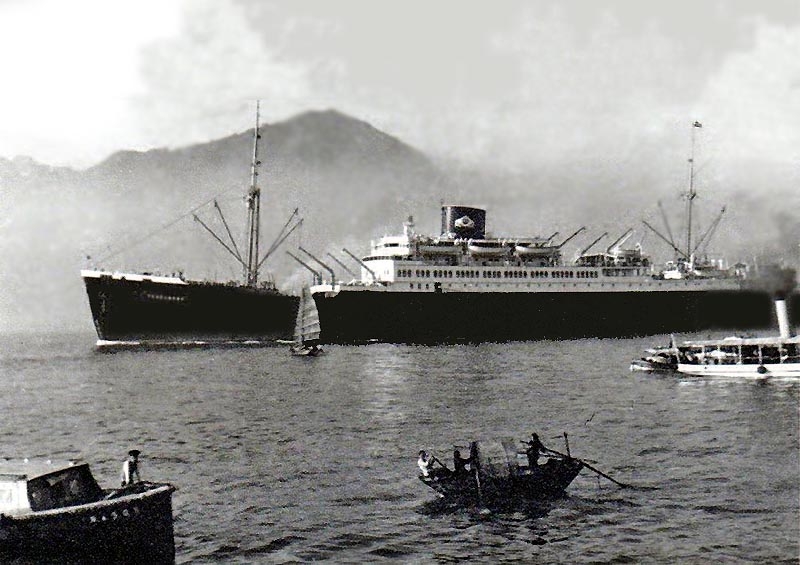
Here we see the MS Boissevain in Hong Kong in June 1968, being her very last al commercial
visit there
KPM & RIL INDEX:
Part One … MS Boissevain, MS Tegelberg & MS Ruys; 1937/38 to
1942.
Part Two … Their trooping years and their commercial years
- 1942 to 1968.
Part Three … Deck Plan, Brochures & Schedules, and Memorabilia.
MS
Tjiwangi & Tjiluwah …
Royal Interocean Lines’ Elegant Yachts.
MS
Straat Banka … A
luxurious KPM/RIL 50 passenger-cargo liner, and her 2 sisters.
SS Nieuw Holland & Nieuw Zeeland ... Two Grand Old Dames of the
Sea.
************************
“Blue Water Liners sailing to the distant shores.
I watched them come, I watched them go, and I watched them die.”
************************
ENTER OUR ssMaritime MAIN INDEX
Where you will discover
over 700 Classic Passenger & Passenger-Cargo Liners!
ssMaritime.com & ssMaritime.net
Where the ships of the past make history & the 1914 built MV
Doulos Story
Photographs
on ssmaritime and associate pages are by the author or from the author’s
private collection. In addition there are some images that have been provided
by Shipping Companies and private photographers or collectors. Credit is given
to all contributors. However, there are some photographs provided to me without
details regarding the photographer/owner concerned. I hereby invite if owners
of these images would be so kind to make them-selves known to me (my email address
may only be found on www.ssmaritime.com), in order that due credit may be given.
This
notice covers all pages, although, and I have done my best to ensure
that all photographs are duly credited and that this notice is displaced on
each page, that is, when a page is updated!
ssMaritime is owned & © Copyright by
Reuben Goossens - All Rights Reserved








































